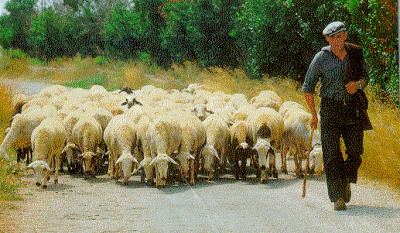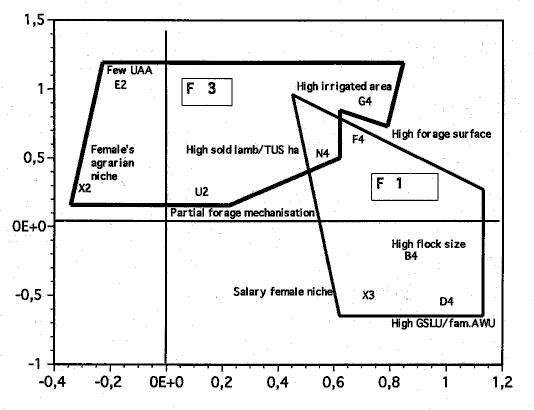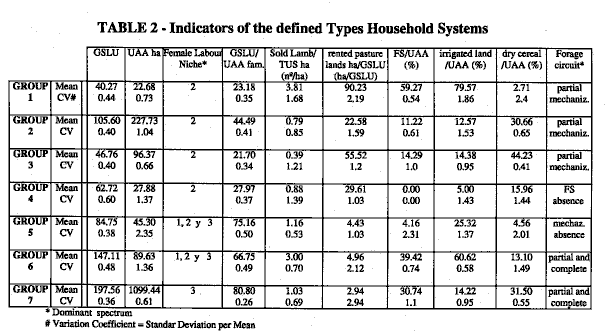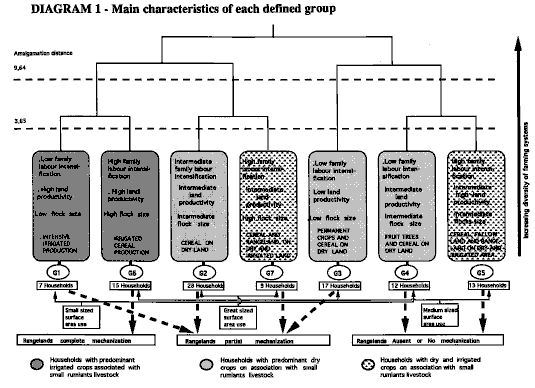 The James Hutton Institute
The James Hutton Institute
This page is no longer updated. The Macaulay Land Use Research Institute joined forces with SCRI on 1 April 2011 to create The James Hutton Institute.
INTRODUCTION
Currently in Europe, the types of agricultural economic activities being
engaged in arehighly related to family household structure. The processes
of transformation which characterise the European systems are strongly
influenced because the decision-making in the rural productive unit is
affected by the organisation of the families.
 The
consideration of the rural production unit as a complex activitysystem
and the objective of family groups which guide it presupposes the existenceof
multiple relationships between sub-systems and with the environment, both
in biological as well as socio-economic aspects.
The
consideration of the rural production unit as a complex activitysystem
and the objective of family groups which guide it presupposes the existenceof
multiple relationships between sub-systems and with the environment, both
in biological as well as socio-economic aspects.
A determining element in the choice of production system (which depends on different types of restrictions and on the aims of the rural family), is the relative scarcity of the different productive factors. Economic development has altered relationships between these so that labour productivity has acquired a greater importance than land productivity.
The socio-economic capitalist model of development has led to a regression
in agriculture in disadvantaged areas. Furthermore, the regression of semi-arid
farming has been accompanied by changes in the farming systems and the
use of pasture space, bringing about difficulties in the maintenance of
the environment. Livestock activities in these areas, apart from their
productive purpose, help to make the pasture areas and the poor farming
areas more profitable and to maintain the environment and cultural life.
The long-term viability of the systems and of the farms that operate them
depend on the level of productivity, at present the most important parameter,
and on the total family income. Hence the future of farming activity and
the maintenance of the quality of the characteristic landscapes of these
regions are seen to be linked not only with the improvement in viability
of farming systems but also in the existence of policies which can compensate
for the poor ability for accumulation of capital experienced by farms in
the regions.
OBJECTIVES
We have not studied the relation between income levels of households, and practical systems, using the rural space hypothesis in order to pursue the identification, modelling and the analysis of different production systems in households engaged in sheep-goat and cereal-sheep production, searching for their possible relationships in the economy and the degree of land intensification, and work factors in the households sampled in Semi-Arid Aragon (Spain) (Figure 1).

METHODOLOGY
Delimited SEMI-ARID spatial base in the Middle Valley of the Ebro River
(Vidal et al .,1993) .
***
Direct technical and socio-economic surveys to 101 Farm Owners
***
Ten basic variables were calculated, referring to the availability of structural factors, economic results, level of intensification, family sociological indicators (Table 1)
D - GSLU/fam.AWU: goat-sheep livestock unit per familiar annual labour unit
E - UAA: utilized agricultural area
F - % FS/ha UAA: forage surface per to utilized agricultural area
G - % irrigated surface/ha UAA: irrigated area per to utilized agricultural area
J - % dry cereal/ ha UAA: dry cereal area per to utilized agricultural area
L - Rented pasture lands/GSLU: ha rented pasture lands per to GSLU
N- Sold kids and lambs/ha TUS*: Number of the Sold kids and lambs per TUS
U - Forage circuit: express the autonomy of forage mechanization
X - Niche labour by females**: express the reproduction-production sociological relations in the household family
**Vidal, Dea de Lima - 1995.
***
Classification via Multiple Correspondence Factorial Analysis (MFCA)
***
Socio-economic modelling of 101 households via Cluster Analysis (CA)
***
Seven groups were isolated
***
In addition, other indicators were calculated, referring to
production orientation, expenditure productivity and family profitability
RESULTS
The characterising factors by MCFA of households are:
Factor 1 (11% of explained variance): This factor expresses the flock
size, pasture lands, family labour availability and the degree of intensification,
between related productive factors. It characterises households as families
with high flock sizes, presence of forage area, high family labour productivity,
low utilisation of rented pasture lands and presence of salaried female
labour (Fig.2);

Factor 2 (10% of explained variance): This factor applies to the production
orientation, the forage mechanisation and the female labour niche. It characterises
households as farms with dry cereal orientation, low forage area, totally
mechanised, high or intermediate cropping areas and the presence of domestic
female labour (Fig.2) and
Factor 3 (9% of explained variance): This factor is the expression of the physical dimension, the presence of irrigated areas and presence of rural female's agrarian labour. It characterises households with important irrigated forage areas, high productivity levels of the available areas and incidence of the agrarian female labour niche (Fig.3).

The classification of Family Households:
A Cluster Analysis was carried out for the differentiation of production
systems practised in the Middle Valley of the Ebro. The distance criteria
of the households, related to the first three resulting axes of the MCFA
were used.
Seven groups of households were determined in this way. The mean values
of the employed variables in the classification are summarised in Table
2.

Moreover, the other calculated socio-economic variables are portrayed in Table 3 .

The main characteristics of each group are described in the Cluster
Analysis Result Dendogram (Diagram 1 ).

CONCLUSIONS
* Regarding to the structural characteristics in connection with the land productivity, we observed that the highest forage surface and irrigated agricultural area's household (G1 and G6) presents the best land productivity with respect to the total utilized surface.
* The highest total economic return, and the greatest labour productivity are obtained by dry and irrigated households with a large flock size, and high availability of land (G7), dry households with the bigger Utilized Agricultural Area (UAA), the bigger flocks of the dry groups (G2), and irrigated households with large flocks (G6). This last common characteristic, the subsidies received and the presence of the irrigated cereal production explain the favourable results.
* The lowest incomes are obtained by dry households with small flocks and intermediate land availability (G3), and irrigated households with the lowest UAA and all group size flocks (G1). Among the dry farms, there are some which use more economically and structurally extensive systems. The irrigated households are those which have high economically and structurally intensive systems. Nevertheless, these systems are economically very fragile as they depend on the uncertain future of the protection measures of European agricultural support policy.
* In general we can see that profitable intensification is not directly
related with the family revenue level and neither with the UAA.
BIBLIOGRAPHY
VIDAL, Dea de Lima - 1995 - " Rural women and gender relations
in the Spanish semi-arid households. I - The female "labour niche"
concept in the Systemic Theory Frame". In: Proceedings of the 2nd
Agrarian Sociological and Economy National Spanish Congress. Valencia,
Spain. (14 pages).
VIDAL,Dea de Lima; Olaizola,A. & Manrique, E. - 1993 - " Facteurs
agraires de la localisation des exploitations ovines dans une zone semi-aride
mediterraneenne". In: Proceedings of the 45th Annual Meeting of the
E.A.A.P. (European Association for Animal Production). Aarhus, Denmark.(10
pages).